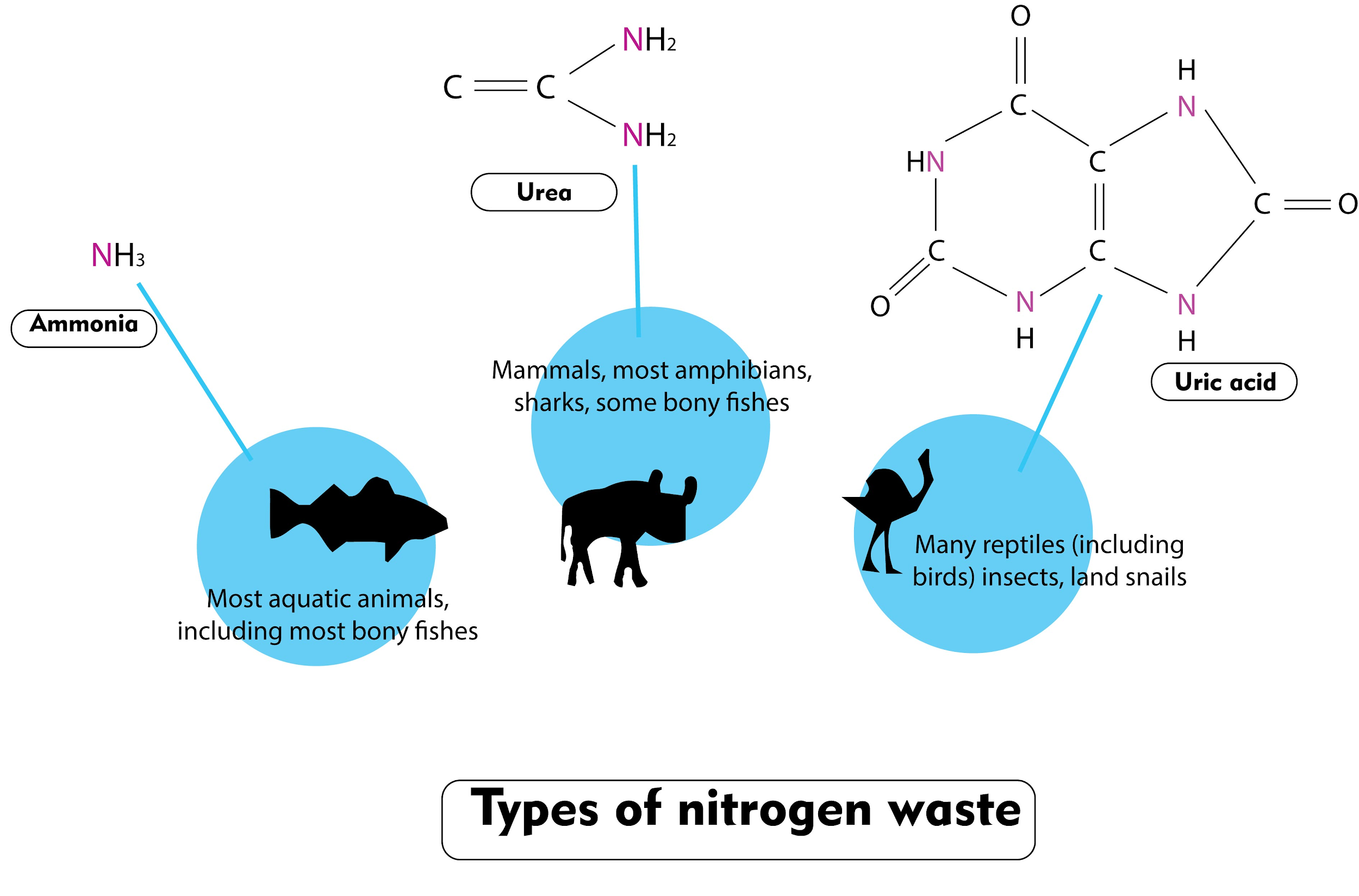
Birds excrete nitrogenous waste as
(A) Uric acid
(B) Urea
(C) NH3
(D) Guanine
Answer
575.7k+ views
Hint: Birds excrete the nitrogenous waste which is least toxic and least soluble in water. The waste which is excreted is a heterocyclic phenolic compound. It tends to form white paste or powder.
Complete answer:
Nitrogenous wastes in the body must be excreted otherwise it can form toxic ammonia in the body. Organisms that excrete nitrogenous waste in the form of uric acid are known as uricotelic animals. Examples are – Birds, Lizards, etc.
Additional Information: The organs of our excretory system help in the removal of these wastes. If these wastes are not removed, our cells or tissue will not work effectively. The waste is excreted in 3 forms i.e ammonia, uric acid, and urea.
Other than Uricotelic, two more types of animals are present on the basis of the excretory product they release. They are as follows-
-Ammonotelic animals: Organisms that excrete nitrogenous waste in the form of ammonia as a waste product are known as Ammonotelic animals
-Ureotelic animals: Organisms that excrete nitrogenous waste in the form of urea are known as ureotelic animals. Examples are – mammals, cartilaginous fishes, etc.
Uric acid contains four nitrogen atoms; only a little amount of water is required for its excretion. The enzyme xanthine oxidase makes acid from xanthine and hypoxanthine, which successively are produced from other purines.
So, the correct answer is ‘Uric acid’.
Note: Ammonia is the most water-soluble and most toxic. Urea requires comparatively more energy and is less toxic in nature. Uric acid is the least toxic and is not easily soluble in water. However, it requires a large amount of energy.

Complete answer:
Nitrogenous wastes in the body must be excreted otherwise it can form toxic ammonia in the body. Organisms that excrete nitrogenous waste in the form of uric acid are known as uricotelic animals. Examples are – Birds, Lizards, etc.
Additional Information: The organs of our excretory system help in the removal of these wastes. If these wastes are not removed, our cells or tissue will not work effectively. The waste is excreted in 3 forms i.e ammonia, uric acid, and urea.
Other than Uricotelic, two more types of animals are present on the basis of the excretory product they release. They are as follows-
-Ammonotelic animals: Organisms that excrete nitrogenous waste in the form of ammonia as a waste product are known as Ammonotelic animals
-Ureotelic animals: Organisms that excrete nitrogenous waste in the form of urea are known as ureotelic animals. Examples are – mammals, cartilaginous fishes, etc.
Uric acid contains four nitrogen atoms; only a little amount of water is required for its excretion. The enzyme xanthine oxidase makes acid from xanthine and hypoxanthine, which successively are produced from other purines.
So, the correct answer is ‘Uric acid’.
Note: Ammonia is the most water-soluble and most toxic. Urea requires comparatively more energy and is less toxic in nature. Uric acid is the least toxic and is not easily soluble in water. However, it requires a large amount of energy.

Recently Updated Pages
Why are manures considered better than fertilizers class 11 biology CBSE

Find the coordinates of the midpoint of the line segment class 11 maths CBSE

Distinguish between static friction limiting friction class 11 physics CBSE

The Chairman of the constituent Assembly was A Jawaharlal class 11 social science CBSE

The first National Commission on Labour NCL submitted class 11 social science CBSE

Number of all subshell of n + l 7 is A 4 B 5 C 6 D class 11 chemistry CBSE

Trending doubts
Differentiate between an exothermic and an endothermic class 11 chemistry CBSE

10 examples of friction in our daily life

One Metric ton is equal to kg A 10000 B 1000 C 100 class 11 physics CBSE

Difference Between Prokaryotic Cells and Eukaryotic Cells

State the laws of reflection of light

Explain zero factorial class 11 maths CBSE




